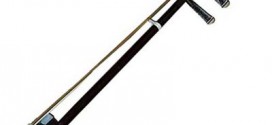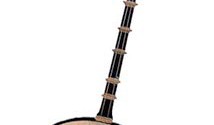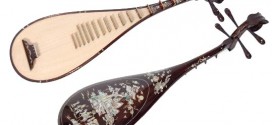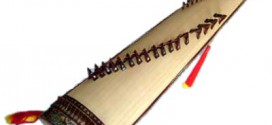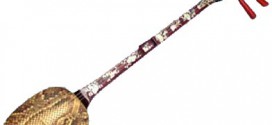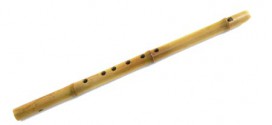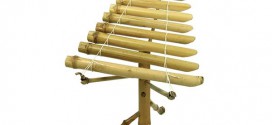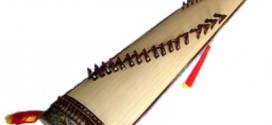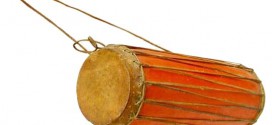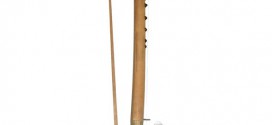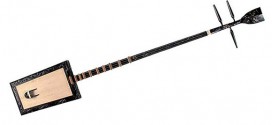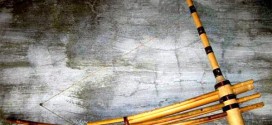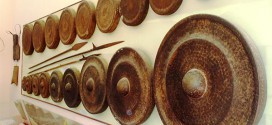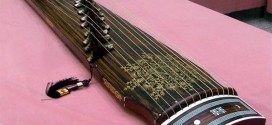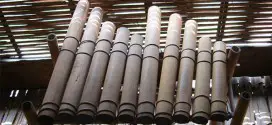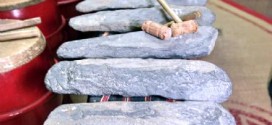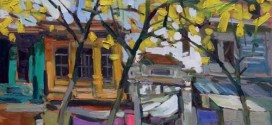The leaving the tomb Festival is the most important one reserved for the deceased held by their family members. All the local villagers attend the festival that lasts for three or four days. It involves two to three slaughtered buffaloes and hundreds of small jars of liquor.
Read More »OocOmBok Festival
Ooc-Om-Bok Festival is a religious service that worships the moon deity of the Khmer minority group and prays for good luck, happiness, good weather and bumper crops. The festival is usually held when the dry season begins and rice are ripening on the fields.
Read More »Thay Pagoda Festival
The Thay Pagoda Festival is held on the seventh day of the third lunar month in remembrance of his merits.
Read More »Huong Pagoda Festival
Approximately 70 kilometers southwest of Ha Noi, Huong Son boasts quite a few pagodas built in the Posterior Le Dynasty. Until the beginning of the 20th century, there have over 100 pagodas
Read More »Chu Dong Tu Festival
The festival annually takes place from the 10th to the 12th day of the second lunar month at two temples, Da Hoa and Da Trach, in Khoai Chau, Hung Yen Province.
Read More »Do Son Buffalo Fighting Festival
The Buffalo Fight in Do Son (Haiphong City) is officially held every year on the 9th day of the eighth month of the lunar calendar.
Read More »Hung King Temple Festival
The festival begins with a palanquin procession performed by three villages of Co Tich, Vi Cuong and Trieu Phu.
Read More »Khau Vai Love Market Festival
During these three days, Khmer people go to visit each other and wish good health, good luck and prosperity to each other. They also join in fun activities.
Read More »Lim Festival
The Lim Festival takes place every year on 13th day of the first lunar month. Visitors come to enjoy the festival and see the performances of "lien anh" and "lien chi".
Read More »Cold Goods Tet
Cold goods Tet or Tet han thuc is celebrated on 3rd day of the third lunar month in almost regions of the Viet. Tet han thuc offers glutinous rice flour cakes stuffed with plum of brown sugar (banh troi), glutinous rice flour cakes stuffed with green bean paste (banh chay) to worship ancestors. Tet han thuc also is an occasion …
Read More »The Mid-Autumn Festival
Every year, on the 15th day of the 8th month in lunar calendar, the children throughout the country in Vietnam are given permission by their parents to march in a procession and carry their lanterns, to eat the Mid-Autumn Festival cakes and to perform the dragon (unicorn) dance, oh, how great and uproarious they are!
Read More »Killing the Inner Insect Festival
This festival take place on 5th day of the fifth lunar month in every house of the Kinh (Viet). This is the middle year festival for the prevention of disease and ward off evil spirits (the day of changing weather from spring to summer, this is the time easy to get pathogen). On the day of “killing inner insects”, every …
Read More »Trung Nguyen Festival
The Trung Nguyen Festival is celebrated on the 15th day of the seventh lunar month. Trung Nguyen Festival, also called “xa toi vong nhan” (forgive the loss souls), originates from Buddhism’s Vu Lan Festival which is aimed at saving and freeing souls from sufferings. It is believed that criminals in hell are released on lunar July 15th so that people …
Read More »Dan Nhi Two-string Fiddle
The Dan Nhi is popular among several ethnic groups in Vietnam. It is also referred to as Dan Co in southern provinces of Viet Nam.
Read More »Dan Nguyet – Two-String Guitar
The Southerners of Vietnam refer to this instrument as Dan Kim. Dan Nguyet has two strings and the resonator resembles the moon, that is probably why it is named Dan Nguyet, which means moon lute.
Read More »Dan Ty Ba or Four-string Guitar
The Dan Ty Ba is a four-string instrument which is frequently present in a traditional orchestra.
Read More »Dan Tranh 16-string zither
The Dan Tranh is also known as Dan Thap Luc or sixteen-stringed zither. Its shape resembles a bamboo tube that has been sliced vertically in half.
Read More »Dan Tam Three-string Lute
This three-stringed lute is used by several ethnic groups in Vietnam. The Viet call it Dan Tam, whereas the Ha Nhi call it Ta in. This instrument exists in three sizes: large, medium, and small. The small is the most popular.
Read More »Bamboo Flute
The bamboo flute has long been attached to the cultural and spiritual life of the Vietnamese. It can be said that the bamboo flute contains the musical essence of the Vietnamese countryside together with the four tranquil seasons.
Read More »T’rung
T'rung is one of the popular musical instruments closely associated with the spiritual life of the Bahnar, TSedan, Giarai, Ede and other ethnic minority groups in the Central Highlands of Vietnam.
Read More »Tam Thap Luc
The Tam Thap Luc is a sort of zither with thirty-six brass strings as it is called. It has the shape of an isosceles trapezoid, with a slightly convex sound board made of light, porous, unvarnished wood.
Read More »Trong Com (Rice Drum)
The Trong Com (rice drum) gets its name from the practice of placing a pinch of hot steamed rice in the middle of the drum skin to "tune" the instrument.
Read More »Dan K’Ni
The K'Ni is a stringed musical instrument, sawing bow branch and is popular among many ethnic minority groups living in northern highlands (central Vietnam) such as Bahnar, Gia Rai, E De, Se Dang, Pako, and Hre...
Read More »Dan Day
Dan Day is a special instrument of Vietnamese origin. This three-stringed lute is used incorporate the peculiarities of the two-stringed lute (dan Nguyet), the four-stringed pear-shaped lute (dan Ty Ba), and the three-stringed lute (dan Tam).
Read More »H’mong Pen Pipe
The Pen-pipe is a musical instrument of the wind family with the free vibrated reed, popular among almost all of Vietnam's ethnicity in different forms. The Kinh (Viet) group calls it Khen, while the Mong ethnic minority call it the Kenh, and the Ede in the Central Highlands use a similar instrument called Dinh Nam.
Read More »Cong Chieng
The Cong Chieng is a kind of musical instrument casted from mixed copper and belongs to the idiophonic family. In Vietnamese language, the word "Cong" points to a musical instrument with a bossed part in center (bossed gong) and "Chieng" without it (flat gong).
Read More »Gong Zither
The gong zither is a stringed musical instrument of flipping branch. It is popular among some ethnicity in the North of the Central Highlands.
Read More »Klong Put
The Klongput is the Xe Dang language name of a musical instrument of the wind family, air driving-in branch.
Read More »Lithophone
The Dan da (lithophone) is a set of stone slabs of different sizes and shapes fabricated through an elementary technique. Lithophone is composed of a set of eleven resonant stones.
Read More »Vietnamese Oil Painting
After the restoration of peace, Tran Van Can produced a canvas retying the rope of the irrigation scoop, which was a creation of high professional level he had long mastered. Duong Bich Lien looked at things in a global way; he brought landscapes and scenes to the level of symbols. In his canvas Harvest, the author has simplified to the …
Read More » Vietnamese Culture and Tradition
Vietnamese Culture and Tradition 